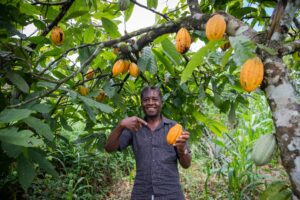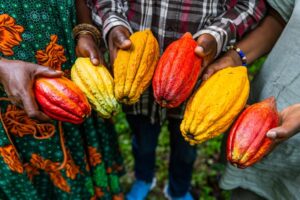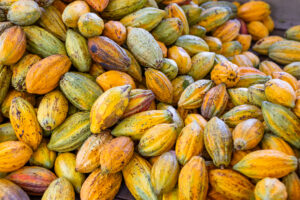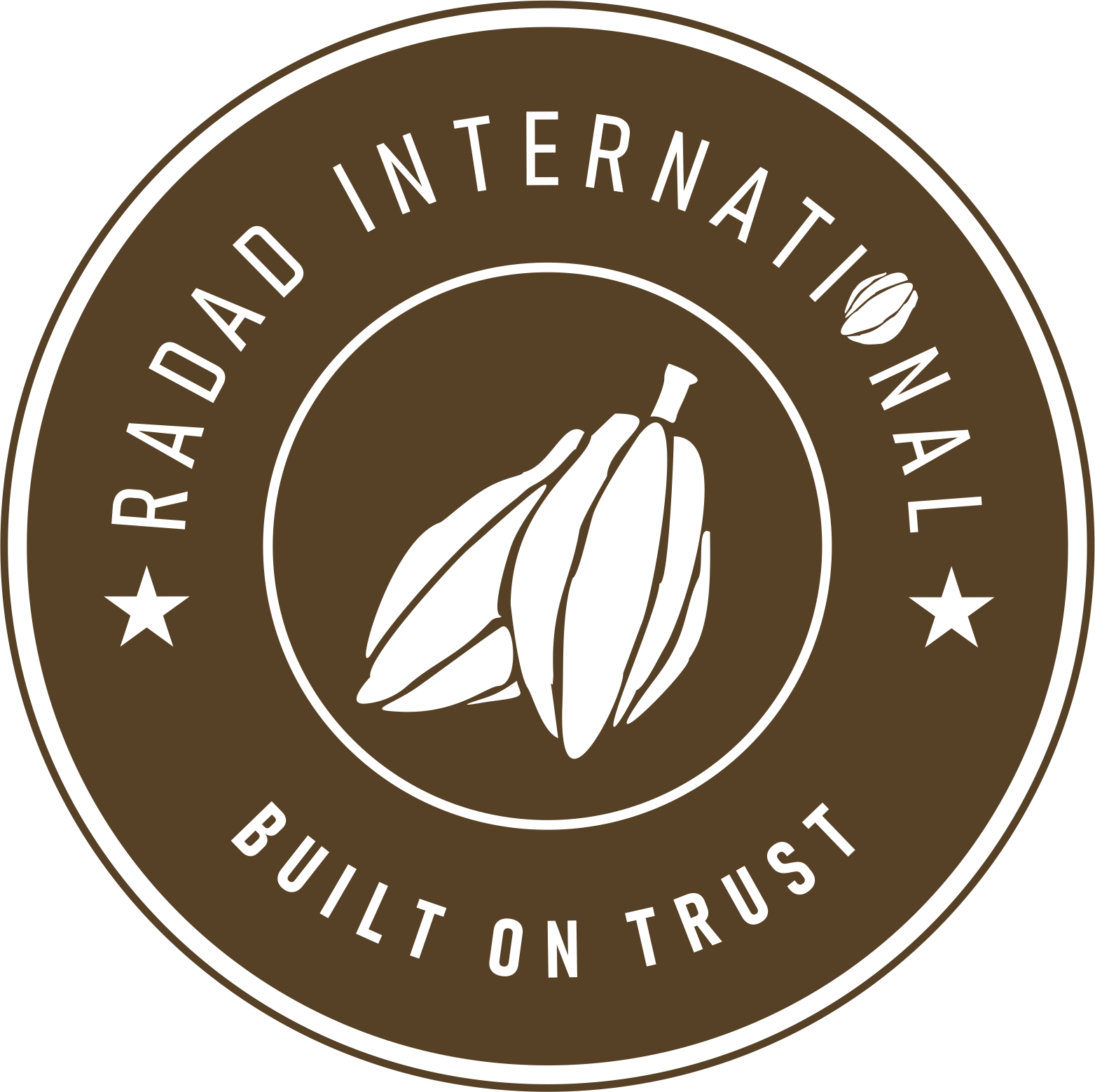Global Cocoa Market Outlook: Current Trends, Demand Patterns, and Price Fluctuations in the International Cocoa Market.
Cocoa, a key agricultural product, is intricately linked to the livelihoods of millions of farmers across the globe, particularly in developing countries. The global cocoa market is estimated to be worth over $10 billion, with chocolate consumption driving the majority of demand. The industry is characterized by a complex supply chain that involves smallholder farmers, traders, processors, manufacturers, and retailers, each playing a crucial role in delivering the final product to consumers.
The cocoa market is a vital component of the global agricultural sector, with cocoa being the primary ingredient in chocolate production. As a commodity, cocoa holds significant economic importance, particularly for countries in West Africa, such as Côte d’Ivoire and Ghana, which together contribute around 60-65% of the world’s cocoa supply.
In recent years, the cocoa market has faced a range of challenges, from climate change affecting crop yields to ethical concerns regarding labor practices on cocoa farms. Simultaneously, there has been a surge in demand for premium and specialty cocoa products, reflecting changing consumer preferences. Understanding these dynamics is essential for stakeholders across the value chain to navigate the evolving landscape of the cocoa industry.
Current Trends in the Global Cocoa Market
1. Sustainability and Ethical Sourcing
Sustainability has become a central focus in the cocoa industry, as consumers increasingly demand products that are ethically sourced and environmentally responsible. The rise of Fairtrade, Rainforest Alliance, and other certification programs highlights the growing emphasis on sustainable cocoa production. According to the Fairtrade Foundation, sales of Fairtrade-certified cocoa increased by 27% over the past five years, indicating a strong consumer preference for ethically sourced chocolate.
Chocolate manufacturers have responded to this trend by committing to sourcing 100% of their cocoa from certified sustainable sources by 2025. This shift towards sustainability is not only driven by consumer demand but also by the need to address social and environmental challenges in cocoa-producing regions. For instance, in 2023, Nestlé launched its “Cocoa Plan,” which focuses on improving the livelihoods of cocoa farmers, promoting sustainable farming practices, and combating child labor.
2. Rising Demand for Premium and Specialty Cocoa
The demand for premium and specialty cocoa has been on the rise, particularly in developed markets such as Europe and North America. These regions account for about 60% of global chocolate consumption. Consumers are increasingly seeking high-quality, artisanal chocolate products that offer unique flavors and are often sourced from specific regions.
The premium chocolate segment was valued at approximately $25 billion globally in 2022 and is expected to grow at a compound annual growth rate (CAGR) of 8.5% through 2027. This trend is driving the demand for specialty cocoa, which, while accounting for only about 5% of global cocoa production, can fetch prices up to three times higher than bulk cocoa. Countries like Ecuador, Peru, and Madagascar have become key players in the specialty cocoa market, known for their fine-flavor cocoa varieties.
3. Impact of Climate Change on Cocoa Production
Climate change poses a significant threat to cocoa production, particularly in West Africa, where the majority of the world’s cocoa is grown. Cocoa farming is highly sensitive to changes in temperature and rainfall, making it vulnerable to the effects of climate change. According to a report by the International Cocoa Organization (ICCO), climate change could reduce cocoa production by up to 40% by 2050 if adaptive measures are not implemented.
In Ghana and Côte d’Ivoire, unpredictable weather patterns and prolonged dry seasons have already led to reduced cocoa yields. The average annual temperature in these regions is projected to increase by 2°C by 2050, which could render many cocoa-growing areas unsuitable for cultivation. To mitigate these risks, efforts are being made to develop climate-resilient cocoa varieties and promote agroforestry practices that enhance biodiversity and soil health.
4. Technological Advancements in Cocoa Farming
The adoption of technology in cocoa farming is transforming the industry, offering new ways to improve productivity and sustainability. Precision agriculture, which involves the use of data and technology to optimize farming practices, is gaining traction among cocoa farmers. This approach allows for the monitoring of crop health, efficient resource management, and increased yields.
Blockchain technology is also being increasingly used to enhance traceability and transparency in the cocoa supply chain. In 2021, Barry Callebaut, a leading chocolate manufacturer, implemented a blockchain-based system to track its cocoa beans from farm to chocolate bar. This innovation not only ensures the authenticity of the product but also helps consumers verify the ethical sourcing of their chocolate.
Demand Patterns in the Global Cocoa Market
5. Emerging Markets and Changing Consumption Habits
While Europe and North America remain the largest consumers of cocoa, emerging markets in Asia and Latin America are showing significant growth potential. In Asia, particularly in China and India, the chocolate market is expanding rapidly, driven by urbanization and rising disposable incomes.
Between 2016 and 2021, chocolate consumption in China increased by 30%, according to a report by Euromonitor International. Although per capita chocolate consumption in Asia is still relatively low compared to Western countries, the region’s large population base presents a massive opportunity for growth in the coming years.
6. Health and Wellness Trends Influencing Demand
Health-conscious consumers are increasingly turning to dark chocolate, which is perceived as a healthier option due to its higher cocoa content and lower sugar levels. In 2022, global sales of dark chocolate grew by 5.5%, outpacing the growth of milk chocolate, according to a report by Grand View Research.
The trend towards healthier eating is also driving demand for chocolate products with added functional benefits, such as antioxidants or probiotics. This shift is leading manufacturers to innovate with new product formulations that cater to health-conscious consumers without compromising on taste.
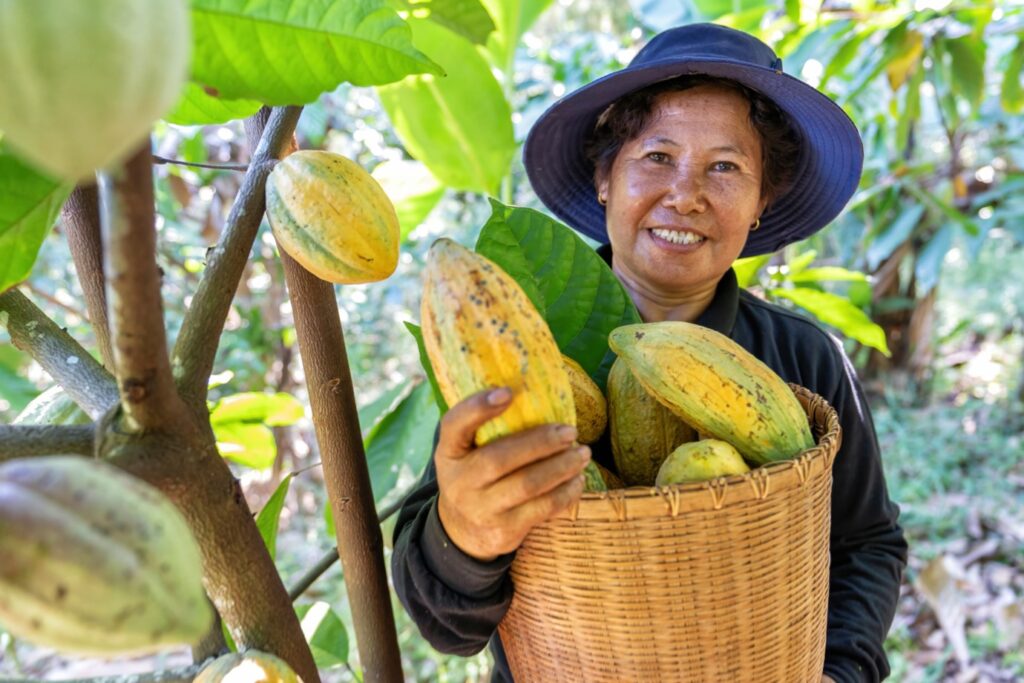
Price Fluctuations in the Cocoa Market
7. Volatility in Cocoa Prices
Cocoa prices are known for their volatility, influenced by factors such as weather conditions, political events, and market speculation. Over the past decade, cocoa prices have fluctuated between $2,000 and $3,500 per metric ton. In 2020, cocoa prices reached a high of $2,900 per metric ton due to concerns over a potential supply shortage in West Africa.
The London and New York futures markets, where cocoa is traded, are highly sensitive to news and events that could impact supply and demand. For example, a report of dry weather in Côte d’Ivoire or political unrest in Ghana can lead to sudden price spikes as traders anticipate potential disruptions in supply.
8. Government Interventions in Price Stabilization
Governments in cocoa-producing countries play a crucial role in stabilizing prices and ensuring fair compensation for farmers. In 2020, Côte d’Ivoire and Ghana introduced a Living Income Differential (LID) of $400 per ton of cocoa to improve the livelihoods of cocoa farmers. This initiative aims to provide farmers with a fair price for their cocoa and reduce poverty in cocoa-producing regions.
The LID has had a stabilizing effect on cocoa prices, although it has also led to tensions with international buyers who are concerned about increased costs. Nonetheless, the initiative represents a significant step towards ensuring that cocoa farmers receive a fair share of the value generated by the global chocolate industry.
9. Currency Fluctuations Impacting Cocoa Prices
Cocoa is traded in US dollars, so fluctuations in currency exchange rates can have a significant impact on prices. For example, a strong US dollar can make cocoa more expensive for buyers in other currencies, potentially reducing demand and leading to lower prices. Conversely, a weak US dollar can make cocoa cheaper for international buyers, boosting demand and supporting higher prices.
According to the World Bank, currency fluctuations contributed to a 15% decrease in cocoa prices in 2021, as a stronger US dollar made cocoa more expensive for buyers in Europe and Asia. Managing currency risk is therefore a critical aspect of cocoa trading, requiring careful monitoring and strategic planning by industry stakeholders.
The global cocoa market is a dynamic and complex industry, influenced by a range of factors including sustainability trends, emerging market demand, climate change, and price volatility. As the market continues to evolve, cocoa producers, exporters, and manufacturers must stay attuned to these trends and adapt their strategies accordingly. By embracing sustainable practices, investing in technology, and diversifying supply chains, companies like RADAD INTERNATIONAL, a major cocoa exportation company that exports cocoa beans, alkalized cocoa powder and raw cocoa nibs, with offices in Nigeria and Dubai, can navigate the challenges of the global cocoa market and contribute to a more equitable and sustainable future for the cocoa industry.
For bulk cocoa exportations, contact



